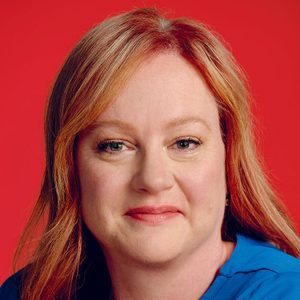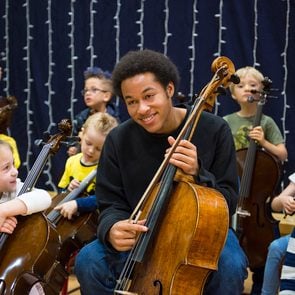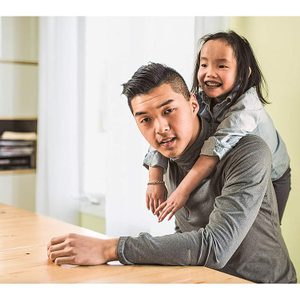I Volunteered at a Hospital in Haiti After the Earthquake. It Changed My Life
I didn’t know what I was getting myself into when I volunteered to help at a hospital in Haiti—or how it would change my life.
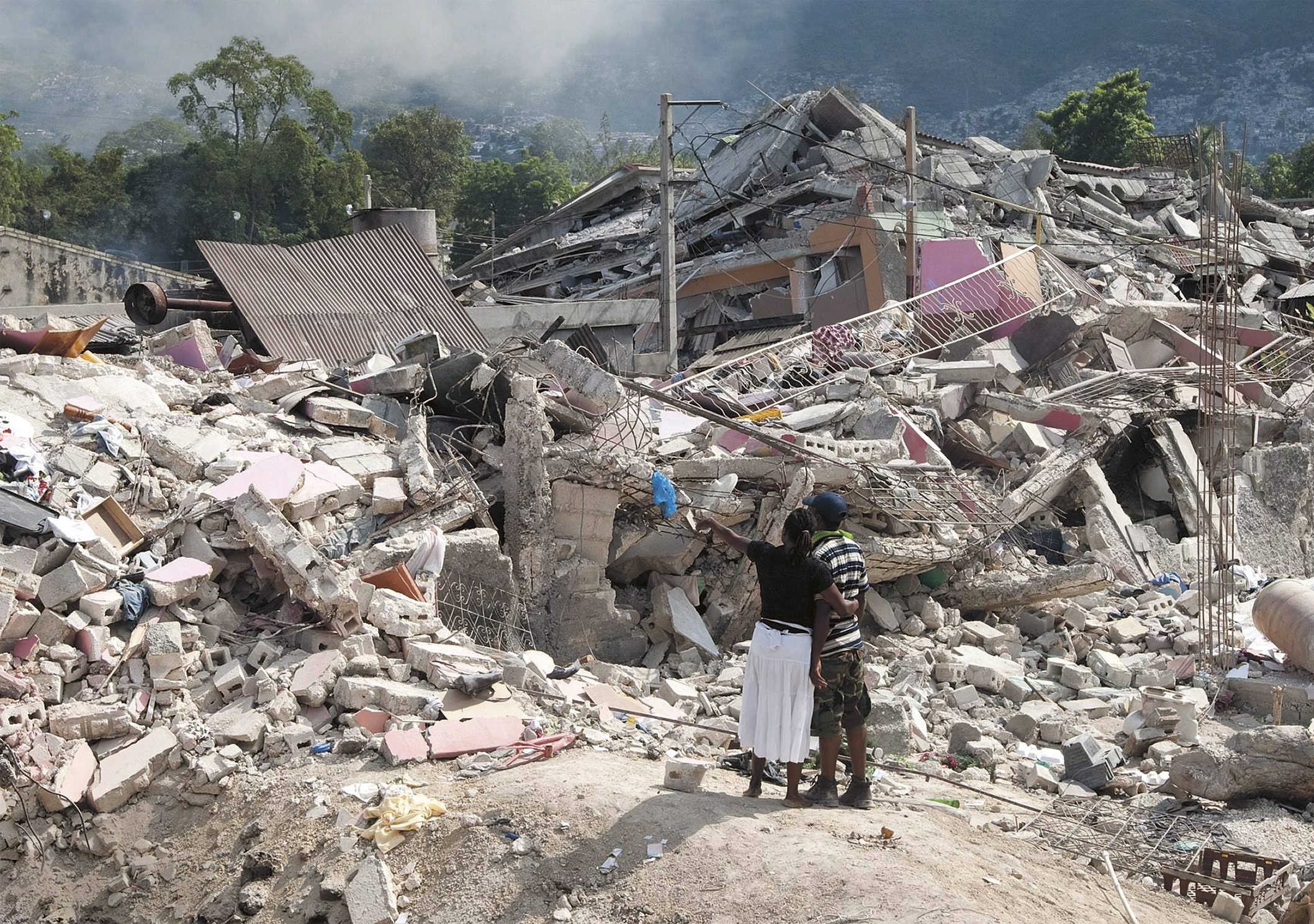
Port-au-Prince, June 2010
The plastic door creaks on hinges rigged with paper and tape. Inside, the floor is plastic, with three sweaty concrete-block walls. There are a couple of operating tables and an anaesthesia machine. Two procedures could be done simultaneously, one with a ventilator and one with spinal anaesthesia. There are two oxygen-saturation monitors and multiple large cylinders of oxygen. The surgical beds are old and feel cold. Just as I am thinking that the room is well-lit, the lights flicker and dim.
I’m being taken on a tour of the trauma hospital at which I’ll be working for the next week. I’m volunteering here as part of the relief effort after the earthquake devastated Haiti the preceding January. Travelling with me from St. John’s are my wife, Allison (a pediatric emergency doctor) and my colleague Dr. Will Moores, a resident orthopaedic surgeon.
An overworked air conditioner hums somewhere. An anaesthesia machine beeps. Two Haitian nurses stand by in silence. All I can see is their eyes. Quiet eyes. Thousand-mile-stare eyes.
The anaesthesiologist on our team mulls over the machine, the general surgeon examines the trays of tools and our nurses look around the room. With Will, I begin poking around what would be our side of the room, looking for things we might need in the next few days. We leave the operating room and pass through a corridor into what used to be a birthing suite. It feels like a prison cell: four concrete walls, a small window and a small door.
There is no air conditioner, and it’s dark. There’s enough room for a single bed and little else. We could use this, but only for minor procedures such as suturing wounds. I leave the building, my nose stinging from the odour of formaldehyde.
The sun is cutting through the treetop canopy that covers the waiting area outside the operating-room building. It’s around 10 a.m. and it’s getting hotter by the second. We proceed to tour the rest of the facilities.
We quickly pass through the tent wards, listening like interns. The tents are jam-packed with people. Beds line one or both walls, leaving narrow corridors for nurses, doctors and families to pass along.
By a desk at one end of the second tent sits a single woman who appears cachectic—a word we use for emaciated—fatigued and quiet. From afar, she looks to be in her late 50s, but as we get closer, I see that she can be no older than 25. She sits in a chair by a bed with no sheets on it, the green plastic mattress fully exposed. She leans against the bed, and her white nightgown is falling off her now-visible skeleton. Her eyes are far different than the large, silent eyes I have seen in others. They are sunken and yellowed. She looks so alone. The bustle of the other tent is eerily absent.
Later on, after we see the other patients in the front of the tent, we step outside, and the local medical staff tell us that the lone girl has AIDS and likely TB. It’s horrifying to think of this poor girl’s fate—the disease, the accompanying solitude. Where is her hope? Her sunken eyes are ingrained in my mind forever.
As soon as rounds are over, the group disperses and the surgical team retreats to the corridors of the operating-room building. The team is nervous; you can sense the tension. We had only just met the local crew and I can barely remember their names. Yet here we are. Will and I sit, my legs bouncing rapidly up and down, as the next patient gets ready in the pre-op assessment area. We review the X-rays of the fractured hip and take pictures to document the case.
Everyone’s a bit anxious as we wait for the beginning of the series of steps that routinely lead to an operation. Allison is introduced to her translator for the week. Wicharly Charles is a young man of short, slim stature. He has a big smile and a bouncing energy that seem to lift everyone around him. Over the week, Allison and Wicharly become great friends, exchanging stories of family members and daily routines. Worrying about your kids feels universal in these moments. Wicharly eventually tells us that he is a painter, and at the end of the week he gives Allison one of his paintings. It still hangs in our kitchen in Newfoundland.
The blue booties and gown are on, the patient is placed on an ancient gurney, and we roll into the OR. The air conditioner is still not fully working, but it’s cooler here than in the other rooms. There is a procedure already under way, with the general surgeon repairing a trapped hernia on the table with the anaesthesia machine. The hip will be partially replaced on the other OR table, under spinal anaesthesia. This will be a first for me. It’s like a scene out of M*A*S*H where the surgeon at one table can talk to another across the way, nurses circulating to help both patients.
The gurney wheels screech to a halt and the patient is transferred onto the OR table and placed on his side. He winces with the move but is otherwise stoic. We firmly attach the patient to the table so he can’t move or fall, and the nurses do the prep. Will and I leave the OR to get ready. The masks go up, eye protection goes on, and as we stand in silence and scrub methodically, all the potential things that can go wrong rush through my head. Then there is a calm and all doubt leaves. One benefit of surgical experience is that, as gut-turned stressed as I am, my hands are steady. The knife confidently and firmly goes through the skin.
The surgery is over, and thankfully it was not a particularly tough one. But I still have this lingering excitement, as if it is the first time I have ever walked into an operating room. We replaced a patient’s hip in conditions I would never have dreamed possible. I keep repeating in my head: I can do this. I can do this. The heat reminds me of where I am, and there is no escaping the sweat. My scrubs are drenched, and it looks like I just showered in them.
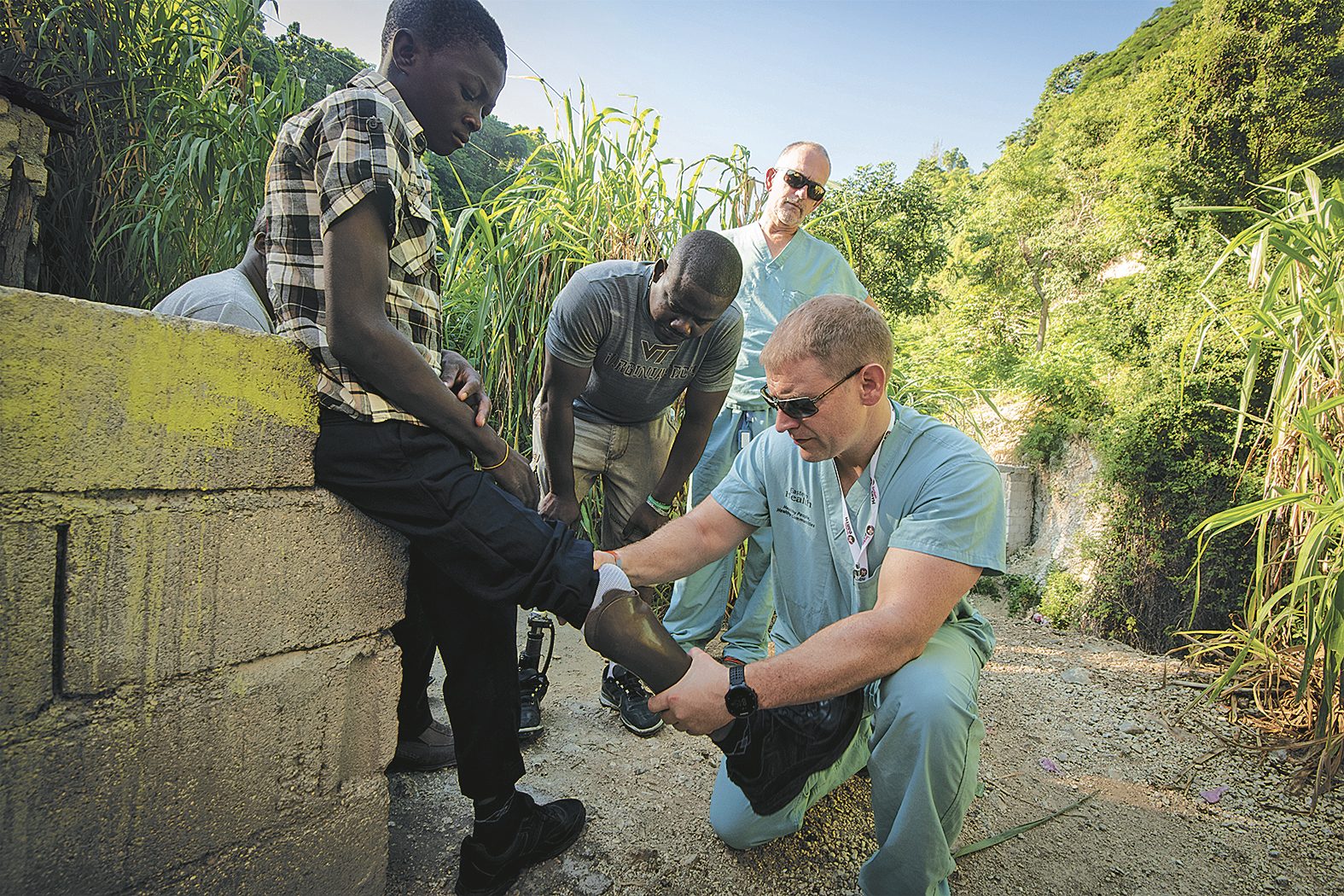
Outside the OR, the lineup of patients stretches out of the courtyard. Allison and the rest of the team are working feverishly to push through as many patients as possible, and there’s a subset of patients with broken bones for us to triage.
We go through the cases and try to prioritize them as best we can. There’s no light box, so we hold X-rays up to the bright sun to illuminate their findings. Will and I know we have our work cut out for us with each broken, cracked or shattered bone we see. It’s a mess, and these people have been in severe pain for a long time with not so much as an Aspirin. We organize the list with the nurses and settle an order for the cases this week.
Next up is a man whose leg was broken in the earthquake. He has been struggling to walk for five months, and we think we can help him, and save the leg, with routine surgery.
Just as the tourniquet goes on, all hell breaks loose. We lose power. The local nurses dash out of the operating room, knocking things over in the dark, their screams filling the room and the hall. It gets worse. There’s a bleeding artery. We have no control, no light, no help. The room feels 10 times hotter. Panic. Blood moving in the dark. Focus returns before the lights. Muscle memory kicks in again. Deep breath. Keep it together till the bleeding is under control and the surgery is finished.
My focus is redirected as the team leader tells us we need to plan to leave the site in 10 minutes. There is an urgency, as we are all aware of the setting sun and what dangers—robberies and kidnappings among them—come with darkness.
We wend our way through the streets of Port-au-Prince, slowly tracing our way back up the hill to our home for the week. I’d fallen asleep, but I stir when the convoy pulls to a stop, and we proceed, with our armed escort, back into the heavily guarded house that feels more like a compound. We all sit exhausted. Tonight we will sleep on a bed under the hum of a generator and the scent of the mosquito net. I lather up in fly repellent, grab a slice of pizza and a cold beer, and within minutes I am nodding off again. The lights are still on, and everyone else is still awake.
As I drift off, some faces from the day revisit me. I wonder where the despondent girl with AIDS is tonight. What was her life like before all this? Where, if anywhere, does she find joy?
I think about some of the faces in the lineup outside the OR—the pain they are in, but the smiles they somehow manage to find. I have never witnessed hope in the eyes of patients like I have in Haiti.
The next day starts on a positive note. It feels like some order is making its way into the disorder. We wake, shower and descend toward the hospital. It takes about 45 minutes in the endless traffic, and we decide to set out earlier tomorrow to avoid the craziness. As we pull through the hospital gates, the funeral home is present in the background. We spend less time getting ready today and jump in right away as the team scurries to their duties.
Will and I begin rounds, checking on patients we operated on the day before. We still haven’t mastered expediently getting through patient rounds in tents; more time with patients means it takes far longer than we would like. It is now almost 11 a.m. and we have not operated yet.
The first surgery case is another hip replacement. The patient, we are told, has had a broken hip since the time of the earthquake and has been in a tent hospital since. He is lying there with a pin in his shin attached to a well-worn rope that hangs off the end of the bed with a bucket containing rocks at its end.
It’s primitive traction. It catches me off guard, and I find myself staring at it as if it’s a display in a medical museum. Traction is a form of treatment used years ago to prevent broken bones from moving so they would heal. It was usually rigged with a series of pulleys and wasn’t meant to be used for long—you could die from blood clots and infections. But this man had been lying flat on his back with the bucket pulling on him for months. If left much longer, it will pull him to his death.
His granddaughter is his bedside companion. She can’t be any more than 11, in a dirty dress, pigtails and the serious expression of someone far older. She did not leave her grandfather’s side the entire time.
Will begins explaining the surgery to the patient and the girl through an interpreter. Once we are finished the explanation, the granddaughter nods her head, there is a conversation in Creole, and they agree to go ahead. She walks alongside her grandfather while he is carried on the stretcher to the operating room, then waits outside in the courtyard.
Things go smoothly. The procedure is routine, and I’m confident in the outcome. Will and I escort the patient to the makeshift recovery room. We will wait until he is stabilized before making the journey through the collapsed portion of the hospital to get his post-operative X-ray done.
The surgery has taken a few hours, but as I walk out of the building, the young girl is still sitting there. There is no translator near. When she sees me, she leaps to her feet. I slow my pace and smile. She smiles and for the first time she looks her age. I give her the thumbs-up, and she sits back down with the smile still on her face.
All I can see is my own daughters sitting there, waiting for news from a surgeon. I get fidgety and I’m suddenly uncomfortable with my emotions, so I turn away and wait for Will.
We take the patient across the uneven pavement of the courtyard. On our way, other team members stop us to look at X-rays and hear of patients to be seen. We balance the stretcher carefully as we pass through a makeshift gateway that leads into one of the most damaged areas of the hospital, through a room where a large chunk of rubble has collapsed directly onto a hospital bed, the green walls still bright.
On the other side of the room lies another outside courtyard. Standing among garbage and rubble is one building that looks relatively well-preserved. It is the X-ray suite. Outside the doors, in the direct sun, are X-ray films hanging to dry.
There is a delay in the doors opening, as the X-ray personnel are busy listening to a soccer match on the radio. Eventually our patient is taken in, and the doors close. Around the corner, there’s a room that is collapsed except for one intact wall with windows. Peering through a broken window, I see that it is—or was—a cafeteria.
The disturbing image of life at the time of a disaster is replaced by the smile of the young girl as we return her grandfather to his bed. The smile, the hope in her eyes, the commitment to her grandfather—she smiles in spite of her surroundings.
I am buoyed by this case, and it sustains me for the remainder of the days of that first week-long trip.
Next, meet the Canadians who made a big difference during the pandemic.
Excerpted from Hope in the Balance, by Andrew Furey. Copyright © 2020 Andrew Furey. Published by Doubleday Canada, a division of Penguin Random House Canada Limited. Reproduced by arrangement with the Publisher. All rights reserved.
